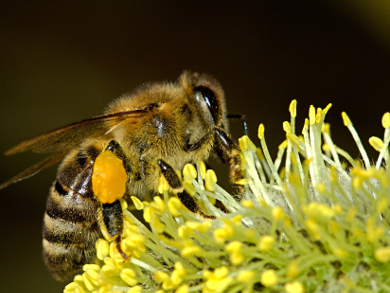The use of neonicotinoids, a type of insecticide, has been restricted by the European commission as a precautionary measure to protect bees. However, in agriculture-heavy ecosystems, the same crops which are usually treated with neonicotinoids are an important source of food for bees. The net effect that this combination of an abundant food source with possible insecticide exposure has on bee colonies is not well known.
Nicholas J. Balfour, University of Sussex, Falmer, UK, and colleagues have performed a landscape-scale study of this effect. The team located 36 colonies each of honey bees (Apis mellifera) and bumble bees (Bombus terrestris audax) near fields of oilseed rape which was grown from seeds treated with thiamethoxam, a neonicotinoid. Another 36 colonies were located several kilometers away from the fields, but still in the same ecosystem. The researchers then measured the effect of the location on the bee colonies during the flowering period of the plants. The evaluation was based on, e.g., the hive weight (the weight of the bees and honey it contains), the number of bees, and the survival of queen bees.
The team found that the colonies of bumble bees were not significantly affected by the distance from the insecticide-treated plants. They attribute this to the fact that any negative effects of the insecticide could be offset by improved food supply. For the honey bees, the survival of the colonies and the queen bees was also unaffected. However, there was a small negative effect of the neonicotinoid-treated plants on the colonies’ weight gain and on honey contamination. According to the researchers, these results put into question whether neonicotinoids are an important factor in the ongoing decline of bee populations.
- Landscape Scale Study of the Net Effect of Proximity to a Neonicotinoid-Treated Crop on Bee Colony Health,
Nicholas J. Balfour, Hasan Al Toufailia, Luciano Scandian, Héloïse E. Blanchard, Matthew P. Jesse, Norman L. Carreck, Francis L. W. Ratnieks,
Environ. Sci. Technol. 2017.
DOI: 10.1021/acs.est.7b02236




